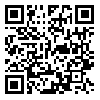BibTeX | RIS | EndNote | Medlars | ProCite | Reference Manager | RefWorks
Send citation to:
URL: http://jams.arakmu.ac.ir/article-1-4025-en.html
2- Department of Health Education, Arak University of Medical Sciences, Arak, Iran. ,
3- Department of Health Education, Arak University of Medical Sciences, Arak, Iran.
4- Department of Epidemiology, Arak University of Medical Sciences, Arak, Iran.
Background: Improvement of nutrition like fish and sea products is influential in preventing from non-contagious diseases. The transtheoretical model is one of the models for effective investigation on nutrition behaviors. This study was done with the aim of investigating fish consumption among women 30 to 50 years old based on the transtheoretical model.
Materials and Methods: This study was an analytical and cross sectional analysis which was conducted in 2014 on 360 women 30 to 50 years in Arak city. The data have been collected by using researcher-made questionnaires which its validity and reliability was assessed in accordance to the transtheoretical model were obtained by visiting houses. Then the collected data were analyzed by pearson correlation test.
Results: The average age of the respondents was 39.34±7.5. The average of fish consumption was 0.62 ±0.83 times a week. 64 % of people in consumption of at least two servings of fish a week were in the two first stages of change (pre-contemplation and contemplation).The average score of self-efficacy in fish consumption was a total of 10.58 ±3.12 out of 15 and the average score of cons of fish was 26.35 ±4.78 and the average score of pros of fish was 21.6 ±2.67 out of 25. Pearson correlation indicates that the amount of fish consumption with constructs of the self-efficacy, stages of change and pros of fish had respectively the most positive correlation (p≤0.05). Fish consumption had no significant difference with age, education, Body Mass Index, occupation, monthly income and marital status.
Conclusion: Fish consumption despite its high level of perceived benefits is really low and to eliminate these barriers, education and cultural-building especially in women who are influential people in family nutrition is necessary.
| Rights and permissions | |
 |
This work is licensed under a Creative Commons Attribution-NonCommercial 4.0 International License. |





